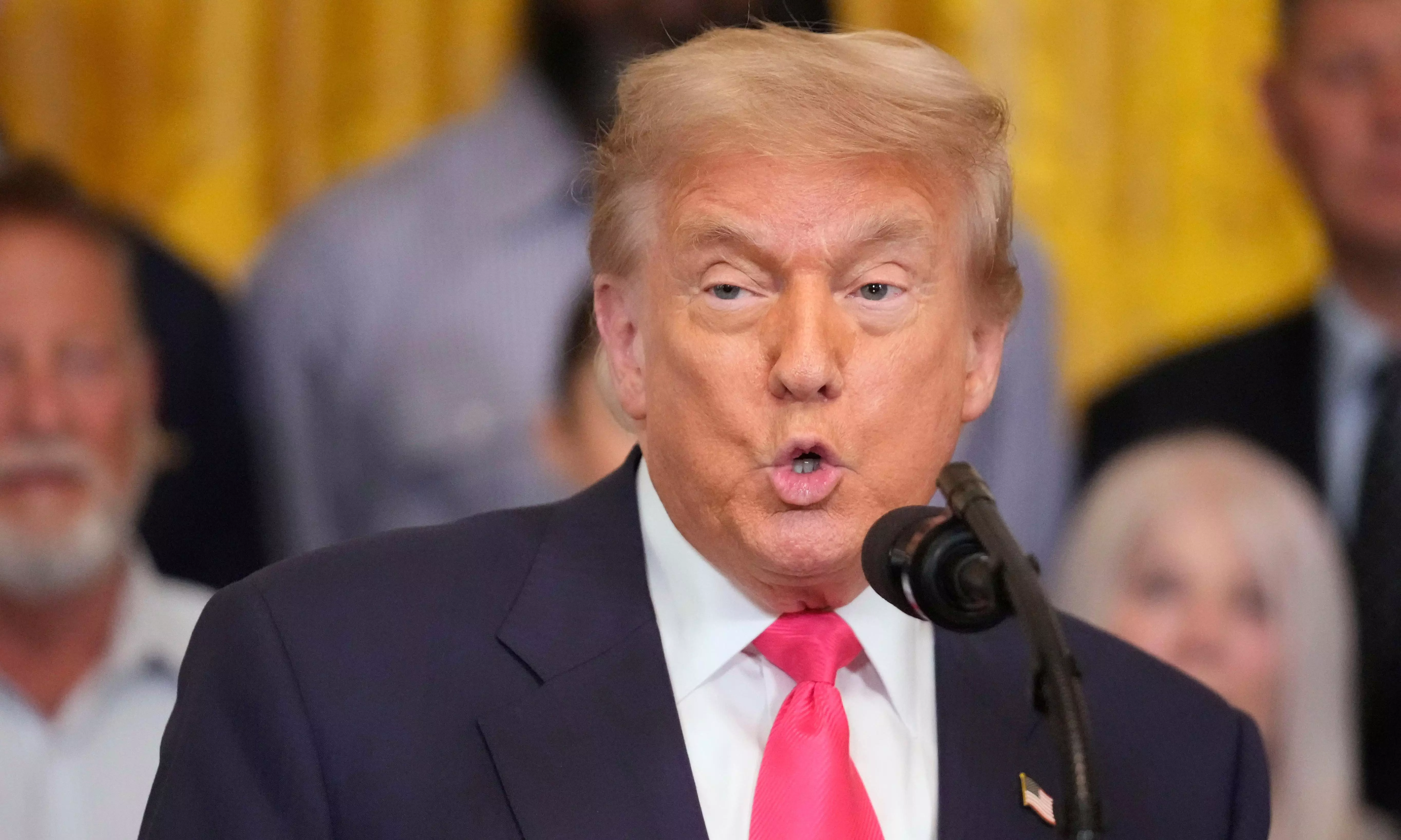India, US Near Trade Deal as Talks Focus on Tariff Cuts for Key Sectors
Trump told reporters that he believed India was ready to lower barriers for US companies

US President Donald Trump. (AP Photo)
US President Donald Trump on Tuesday said that India will “open-up” its market for the US in the BTA deal to be signed soon, most probably before July 9. While he hinted on “less tariffs”, the Indian side is still pushing for zero tariffs on high labour-intensive products like garments, footwear, carpets and leather goods valued at $14.3 billion.
“I think we are going to have a deal with India. And that is going to be a different kind of a deal. It is going to be a deal where we are able to go in and compete,” Trump said. The US Treasury Secretary Scott Bessent also said that US and India are nearing a deal to lower tariffs and help India avoid levies imposed by the Trump administration rising sharply next week when the pause on reciprocal tariffs will be lifted.
“Right now, India does not accept anybody in. I think India is going to do that, and if they do that, we are going to have a deal for much less tariffs,” he added.
The US also has been insisting on opening up the agricultural market – letting in products, including genetically-modified foods like maize, soya bean, cotton and corn as well as dairy products of cows fed on animal feed.
The US is also likely to get the central government procurement market opened up for its companies. The procurement market for central government departments and central public sector companies is one of the largest in the world—estimated at nearly $600 billion annually, or approximately 15 per cent of GDP. This procurement is made across infrastructure, healthcare, power, education, transport, and defence. India had included government procurement in trade deals with both the UK and the UAE.
Though Trump mentioned “less tariffs” on Tuesday, under current proposals, Indian goods could face Most Favoured Nation rates and basic tariffs of 10 per cent. As the trade deal negotiators from the US side lack fast-track trade authority, the country cannot exempt MFN tariffs across the board.
Meanwhile, India is pushing hard for full tariff elimination on high-employment exports such as garments, footwear, carpets, and leather goods.
“Indian officials argue that unless these high-employment sectors are granted full duty-free access, the FTA will lack credibility at home and appear skewed in favour of U.S. interests,” said GTRI.
This risk is particularly acute for high labour-intensity sectors, which contributed over $14.3 billion to India’s exports to the US in FY25. These include garments valued $5.33 billion, textiles and carpets of $2.38 billion, made-ups and worn clothing $2.95 billion, leather $795 million, footwear $461 million, ceramics and stoneware of $1.55 billion, and wood and paper articles valued $823 million. These products face MFN tariffs often ranging between 8 per cent and 20 per cent.
India is also pushing for duty exemption for medium labour-intensive products valued $44.6 billion. These include electronics and telecom products, diamonds and jewellery, chemicals, iron and steel goods, base metals, automobiles and parts, plastics and rubber articles and diverse categories such as medical devices, toys, furniture, and clocks. These sectors face moderate US tariffs of 2–5 per cent.
( Source : Deccan Chronicle )
Next Story

